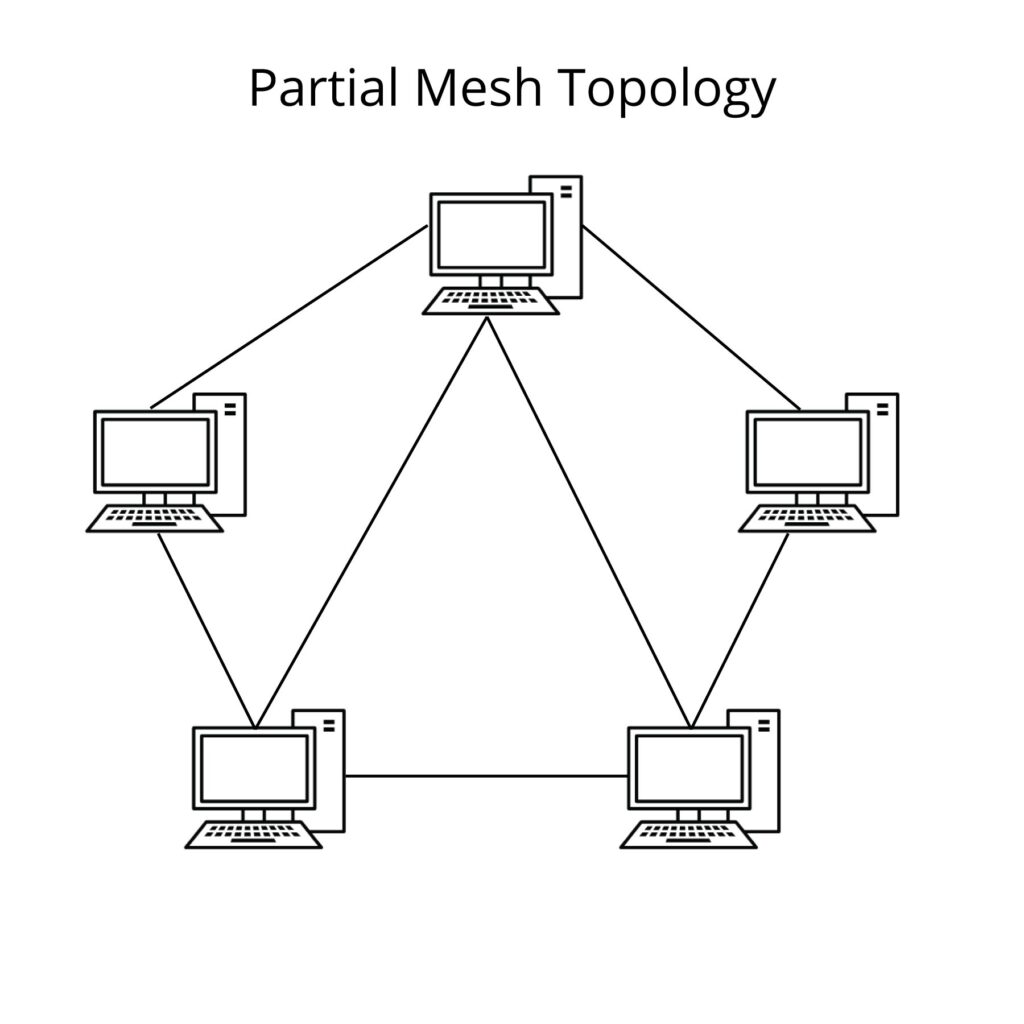What is Mesh Topology?
Mesh Topology is a Network Topology, where every node has a connection to every other node or component of the network. Mesh Topology is commonly used for wireless networks. A Mesh wireless network is a collection of wireless devices that may not use centralized control but instead features decentralized management.
In Mesh topology, each node is individually connected to all nodes by a point-to-point connection via cable for redundancy and fault tolerance. This topology is the most resistant to failure if any single link that fails will not affect the reachability.

If the total number of nodes in a Mesh Network is “N”, then:
- The number of communication channels or communication cables of the network will be N*(N-1)/2.
- The number of input-output ports in each node of the mesh network will be (N-1).
Mesh Topology is actually pretty rare now and not very common in Computer networks today. But because of the robust fault tolerance it offers, it is still in use.
Although you won’t find Mesh Topology used in LANs but will find a modified version of it known as a Hybrid Mesh used in a restrained manner on WANs, including the Internet.
Types of Mesh Topology
There are two types of the mesh topology:
Full-Mesh Topology
The Full-Mesh Topology connects all nodes to one another. This brings fault tolerance and redundancy to a network. In Full-Mesh Topology, every node required (N-1) number of input-output ports.
Partial-Mesh Topology
In Partial-Mesh Topology, at least one node maintains multiple connections to all other devices. This method trades off the cost of meshing all nodes by allowing the network designer to choose which nodes are most critical and appropriately interconnect them. Peripheral networks use the Partial-Mesh Topology and connect with the Full-Mesh Network.

Advantages And Disadvantages of a Mesh Topology
Mesh Topology, is another type of topology like Star Topology. Whereas a hub-and-spoke topology lacks redundancy and suffers from suboptimal routes, a Mesh Topology directly connects every node to every other node.
Advantages of a Mesh Topology
- In Mesh Topology, the biggest advantage is fault tolerance. If any node fails or there is a break in a cable segment, traffic can be routed through a different pathway.
- Because of Point-to-Point connections between nodes, fault identification is easy and there is no or very less traffic collision observed.
- Data Transfer between nodes is very Secure, Reliable, and High Speed.
- To scale up the network by adding a node is very easy and won’t interrupt the ongoing data transmission.
Disadvantages of a Mesh Topology
- Mesh Topology is Costly, if we compared it to other topologies, like Bus Topology, Star Topology, Ring Topology, etc. It is because of the additional cabling and network interface card (I/O) to create multiple pathways between each node.
- To connect a node, in each node you need to increase the number of I/O ports and cables.
- This topology is very difficult to administer and manage because of the numerous connections.
- Reconfiguration is very difficult.
Follow us:
If you like our articles and tutorials, you can follow us on Facebook. Also, join our Official Facebook Group for QnA sessions and Discussions with the worldwide technical community.




